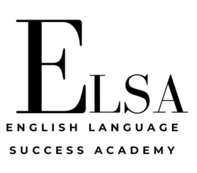In today’s digital age, email has become the primary mode of professional communication. Whether you’re corresponding with colleagues, clients, or potential employers, your email etiquette can significantly impact your professional relationships and reputation. This article delves into the essentials of email etiquette and formal communication, providing you with the tools to craft polished, professional emails that leave a lasting positive impression.
Professional Email Structure
The foundation of a well-crafted email lies in its structure. A professional email typically consists of the following elements:
1. Subject Line: Clear, concise, and relevant to the email’s content.
2. Salutation: A appropriate greeting to set the tone.
3. Introduction: A brief opening statement explaining the purpose of your email.
4. Body: The main content, organized into concise paragraphs.
5. Conclusion: A closing statement summarizing the main points or outlining next steps.
6. Signature: Your professional sign-off and contact information.
When composing your email, ensure that each of these elements is present and properly formatted. This structure not only makes your email easier to read but also demonstrates your professionalism and attention to detail.
Appropriate Greetings and Sign-offs
The way you begin and end your email sets the tone for your entire communication. Choose your greetings and sign-offs carefully, considering your relationship with the recipient and the context of your message.
For formal greetings, options include:
– “Dear Mr./Ms./Dr. [Last Name],”
– “Hello [Full Name],”
– “Good morning/afternoon [Name],”
For less formal situations or when you have an established relationship:
– “Hi [Name],”
– “Hello [Name],”
When it comes to sign-offs, consider these professional options:
– “Best regards,”
– “Sincerely,”
– “Thank you,”
– “Best wishes,”
– “Yours truly,”
For ongoing email threads, you may use more casual closings like:
– “Thanks,”
– “Regards,”
– “Best,”
Remember, consistency in your greetings and sign-offs helps maintain a professional image throughout your correspondence.
Tone and Politeness in Written Communication
The tone of your email can greatly influence how your message is received. In professional settings, it’s crucial to maintain a polite, respectful, and neutral tone. Here are some key points to consider:
1. Be courteous: Use “please” and “thank you” where appropriate.
2. Avoid humor or sarcasm: These can be easily misinterpreted in written form.
3. Use a positive tone: Frame your messages in a constructive manner.
4. Be concise: Respect the recipient’s time by being clear and to the point.
5. Proofread: Check for spelling, grammar, and punctuation errors before sending.
When addressing sensitive topics or potential conflicts, take extra care with your language. Use a diplomatic approach, focusing on solutions rather than problems. If you’re unsure about the tone of your email, consider having a colleague review it before sending.
Remember that formal communication doesn’t mean being cold or impersonal. You can be professional while still being friendly and approachable. The key is to strike a balance between formality and warmth, depending on your relationship with the recipient and the nature of your communication.
Elsa Says:
Mastering email etiquette and formal communication is an essential skill in today’s professional landscape. By adhering to a proper email structure, using appropriate greetings and sign-offs, and maintaining a polite and professional tone, you can ensure that your written communications are effective and well-received. Remember, every email you send is a reflection of your professionalism and attention to detail. Take the time to craft thoughtful, well-structured emails, and you’ll build stronger professional relationships and enhance your reputation in the workplace.



